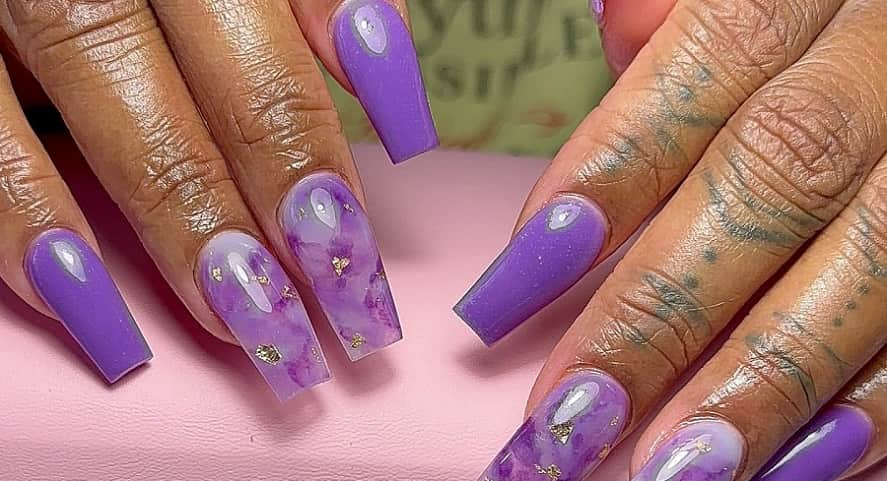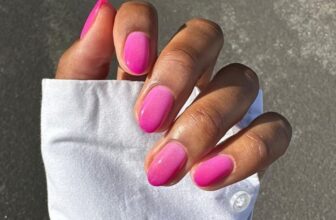 Photo: Instagram.com/Nailedbyloanny
Photo: Instagram.com/Nailedbyloanny
There are many different types of acrylic nails available. So, how do you know which type of acrylic nail is right for you?
Every day, people strive to improve their physical attractiveness. The evidence is found in the sheer volume of women — and occasionally men — who frequent beauty salons on a daily basis. Depending on their own tastes, many women prioritize various aspects of beauty enhancement, such as fashion, skincare, hair care, and even manicures. And, just like ice cream toppings, getting beautiful, polished nails are the perfect finishing touch to help pull your overall look together.
There are many different manicure treatments available, and one of them is the popular acrylic nail manicure, which instantly extends your nail’s length and is perfect for any type of nail art design you can imagine. Although acrylic nails have been around for a while, they have recently become in vogue due to a shared passion for nail art seen on our Instagram feeds. In this detailed guide, we have emphasized all you need to know about acrylic nails and the most prevalent varieties of acrylic nails that are available.
What Are Acrylic Nails?
Acrylic nails are a customizable type of artificial nail made by mixing a liquid and a powder to create a hard, durable layer on top of natural nails.
There are arguments that acrylic nails date back to ancient Egypt because Egyptian women were known to have worn long, artificial nails as a prestige symbol. These fake nails were discovered by archaeologists to be made of ivory, as well as gold and bones.
However, it would interest you to know that acrylic nails were first invented in the 1970s by a dentist named Frederick Slack. It happened that Dr. Slack was looking for a way to create artificial nails for his then-broken nails. This led him to experiment with different materials, including dental acrylics, and eventually, he developed a process for creating acrylic nails that involved applying a liquid and powder mixture to the natural nail and sculpting it into a desired shape.

Dr. Slack’s technique quickly gained popularity among women who wanted to have long, beautiful nails without having to wait for them to grow naturally.
Today, acrylic nails are still a popular option for those who want to enhance the appearance of their nails. There are several different types of acrylic nails, each with its own unique characteristics and benefits.
Types of Acrylic Nails
Acrylic nails offer a wide variety of options for those looking to enhance their natural nails. From classic French tips to bold 3D designs, there is a type of acrylic nail to suit any style or preference.
Traditional Acrylic Nails
Literarily, the most common type of acrylic nails is created by mixing a liquid monomer and a powder polymer to create a thick paste that is applied to the nails. They are known for their durability and long-lasting wear.
Sculpted Acrylic Nails
This type of acrylic nail is created by building up the acrylic on the nail bed to create a custom shape. Sculpted acrylic nails are a good option for those with irregular nail beds or who want a more customized look.
French Acrylic Nails
You can achieve this classic French acrylic nail by using a white or nude acrylic powder to create a natural-looking tip, followed by a pink or clear acrylic to cover the rest of the nail.
Glitter Acrylic Nails
If you need a little more sparkle on your nails, glitter acrylic nails are a popular choice. These nails can be created by adding glitter to the acrylic powder or glitter to the finished nail with polish or a top coat.
Colored Acrylic Nails
Colored acrylic nails allow for endless possibilities when it comes to nail art. They can be created by adding pigment to the acrylic powder, or by using colored acrylic powders.
Ombre Acrylic Nails
This trendy nail style involves blending two or more colors to create a gradient effect. Ombre acrylic nails can be created by using a brush to blend the colors while applying the acrylic.
3D Acrylic Nails
For those who want an extra pop of dimension, 3D acrylic nails can be created by adding designs and embellishments such as flowers, rhinestones, and other decorations to the finished acrylic nails.
How to Apply Acrylic Nails
It’s important to note that the application process of acrylic nails should be done by a professional nail technician because an improper application can damage natural nails and their surrounding skin. Here is a general overview of the steps involved in applying acrylic nails;
-
Nail Preparation
The natural nails are cleaned and any old polish or debris is removed. The nails are then filed and buffed to create a smooth surface for the acrylic nails to adhere to.
-
Application of the Tips
Artificial tips are applied to the natural nails, which are glued onto the tips of the nails to create an extended length. These tips come in various shapes and sizes and can be trimmed and filed to the desired shape.
-
Acrylic Application
A mixture of acrylic powder and liquid is then applied to the area where the artificial tip meets the natural nail. This mixture is then sculpted into the desired shape and length using a brush.
-
Curing
The acrylic mixture is allowed to dry and harden. Once it has cured, it can be filed and shaped further.
-
Finishing
Once the acrylic nails have been shaped and smoothed, a top coat of polish or nail art can be applied for a finished look.
How to Remove Acrylic Nails
Removing your acrylic nails is a delicate process that may go wrong without the expertise of a professional nail stylist. Nevertheless, these are the safest steps to take in removing your acrylic nails:
- First, use a nail clipper to trim the acrylic nails as short as possible without cutting into the natural nail bed.
- Next, file the surface of the acrylic nails with a coarse nail file to remove the shiny top layer.
- Soak your nails in a bowl of acetone for about 15-20 minutes. You can also wrap each nail in a cotton ball soaked in acetone and then cover them with aluminum foil to help the acetone penetrate better.
- After 15-20 minutes, use a cuticle pusher or a wooden stick to gently push the softened acrylic nails off your natural nails. Be gentle to avoid damaging your natural nails.
- If there is any remaining acrylic residue, use a fine nail file or buffer to gently remove it.
- Once you have removed all the acrylic, wash your hands thoroughly with soap and water to remove any remaining acetone or acrylic residue.
- Apply a cuticle oil or hand cream to moisturize your nails and hands.
Does Acrylic Harm Your Natural Nail Bed?
Acrylic nails can be potentially harmful to your nail beds if they are not applied or removed properly. When acrylic nails are not applied correctly, the rough surface of the acrylic nail can rub against the natural nail bed, leading to the thinning of the natural nail. And when they are not removed properly, the process can cause pain, nail sensitivity, and in extreme cases, permanent damage.
Also, acrylic nails can also trap moisture and create a moist environment that promotes the growth of bacteria and fungi, which can cause infections in the natural nail bed.
However, if acrylic nails are applied, removed, and maintained properly, they can be a safe, convenient, and effective solution to improve the look of your nails without endangering the natural nail bed. It is therefore advised to take good care of your nails and to have acrylic nails applied and removed by a skilled nail technician in order to prevent any potential harm.
If you’re ready to get your acrylic nails, you may now look into the top nail salons in your area. While selecting your nail salon, take into account the ambiance, the salon’s aesthetics, its organizational style, and the professionalism displayed by the staff. To prevent contracting an infection, you would also need to make sure the nail salon is sanitary and that the nail technician uses disinfected tools on your hands.






